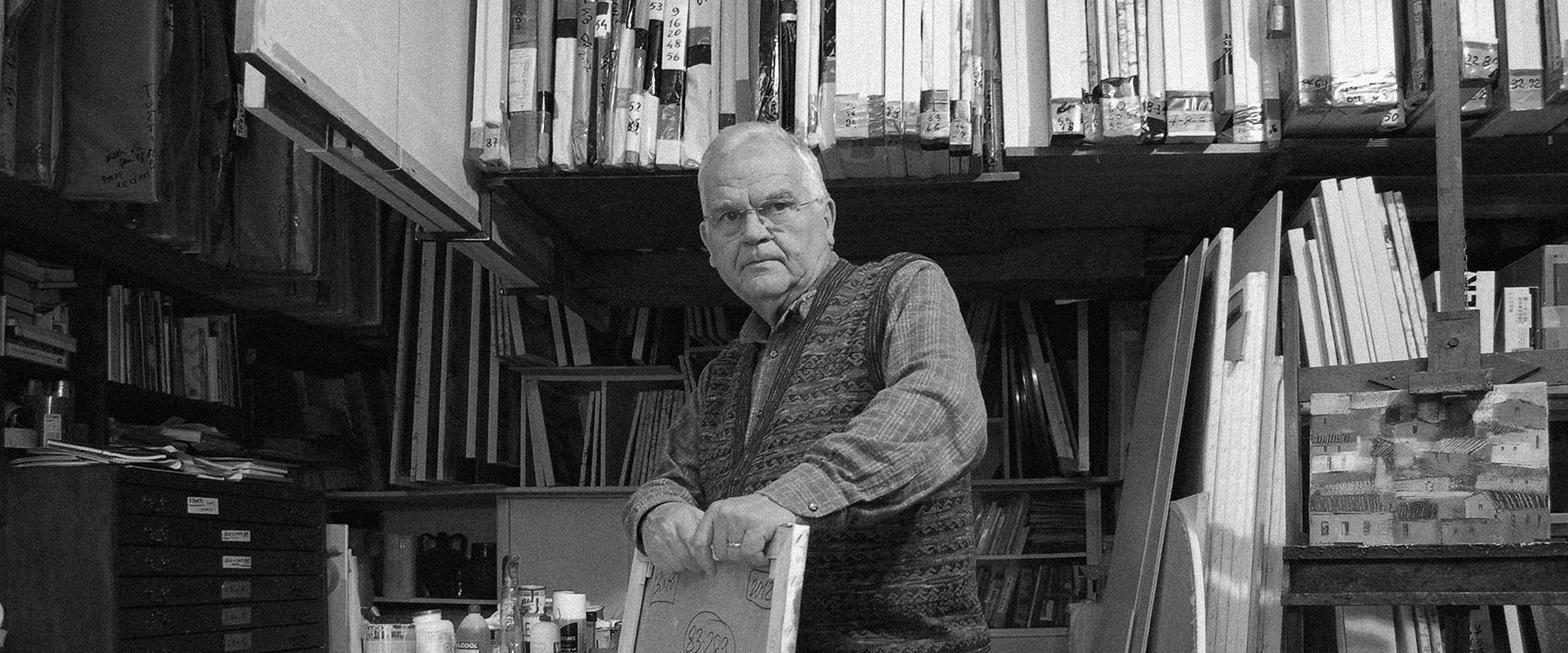1943
Luciano Pasquini was born in Florence but his family soon moved to the country home in Mezzomonte, in the municipality of Impruneta (FI).
1948
He attended the San Gersolè primary school where his teacher was Maestra Maria Maltoni. This represented a really significant cornerstone for his future vocation as an artist, both in terms of pictorial language and choice of subjects to paint. His “Flowers”, “Landscapes”, and “Glimpses of houses”, always presented with grace and delicacy of colour, derive from these years, thanks to the quality of the teaching he received from Maria Maltoni based on the maximum freedom of expression. In fact, as can be understood from leafing through the book La Maestra e la Vita – Maria Maltoni e la scuola di S.Gersolè (Noèdizioni, Impruneta 2006), the School of S.Gersolè had a decidedly positive influence on all the young students lucky enough to go there. The lessons were held in the same room with all the students from the first to the fifth grade and upwards. They were left to write and draw whatever they liked, taking inspiration from the rural environment they lived in for the purpose not so much of teaching, that is, reaching a mere scholastic result, but of educating them for life, by allowing them to express themselves fully in complete freedom without the fear of finding an intransigent and repressive judge in their teacher. Still life drawing was the most important subject, accompanied by the keeping of diaries that were later gathered together and published in a book. Over the years this all earned the school of S.Gersolè great acclaim due to its novel teaching methods and their educational effectiveness. This drew the attention of numerous cultural, literary and artistic celebrities (from Pietro Calamandrei to Italo Calvino, from Oriana Fallaci to Michelangelo Masciotta, from Emilio Cecchi to Margaret Gardner, etc.) who praised its methods in the leading newspapers and journals of that era (see the abovementioned volumes at the exhibition held in Villa Corsini- Mezzomonte in 2006, the exhibition held at the Istituto degli Innocenti, Florence, in 2007 and the extensive bibliography from the forties onwards).
1951
Following the family’s move to another home, still in the municipality of Impruneta but outside Mezzomonte, Luciano Pasquini left the school of S.Gersolè and finished primary school with another teacher. However, he never lost touch with that Tuscan countryside that has remained a constant in his paintings, just as everything that he learnt and experienced at the school of S. Gersolè is etched in his mind, while for a few more years he still continued to draw with crayons (“6 Giotto coloured pencils”) following the path laid down by Maria Maltoni, and with the same enthusiasm as the children of S. Gersolè.
1971
He started drawing again, passing directly over to oil colours and thus rekindling the passion, ignited at the school of S.Gersolè that had lain under the ashes for so many years. In fact, if we examine his early works there is an undeniable similarity between these drawings and those carried out at the school. However, he only became aware of this affinity in 2006, when he visited the exhibition of drawings “in the S.Gersolè style”, held at Villa Corsini at Mezzomonte (Impruneta), and was able to compare the setting and composition with his “still life” paintings and especially his “flowers”, a subject that is ever-present throughout his artistic career.
1972
His first one-man show was held with his brother Mauro at Camonti (Arezzo), at the exhibition organised by art critic Pietro Civitareale, with whom he still maintains relations based on friendship and work, and who also wrote Pasquini’s first monograph (I colori della memoria – The colours of memory, Poesiarte, Florence 1988).







